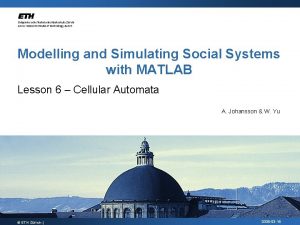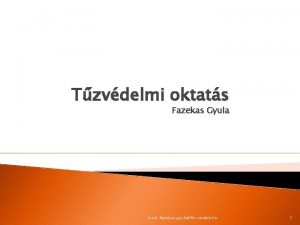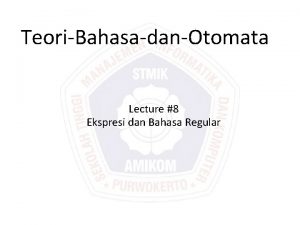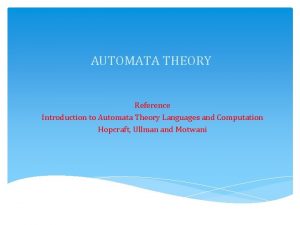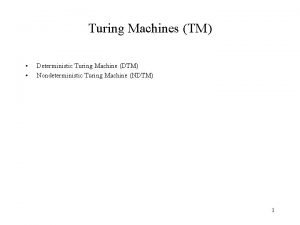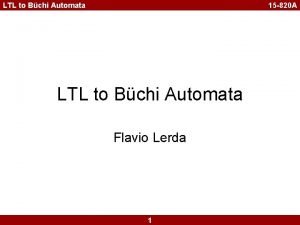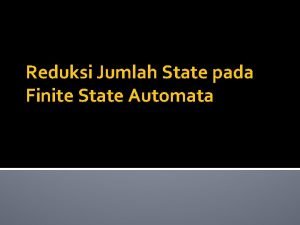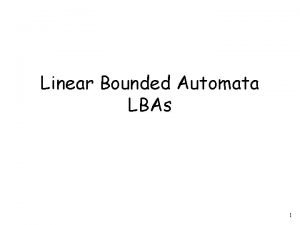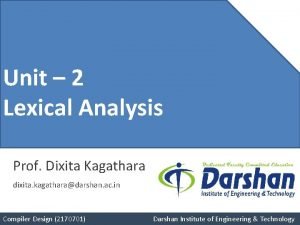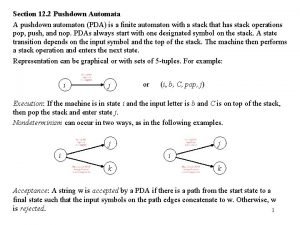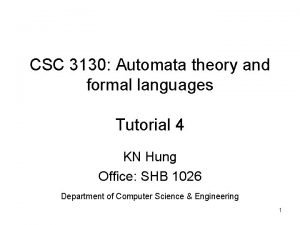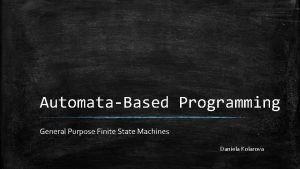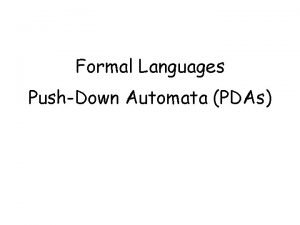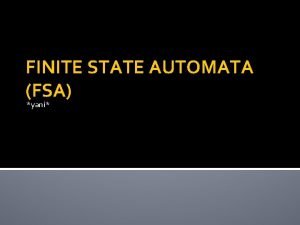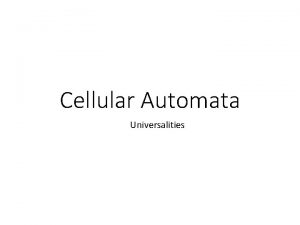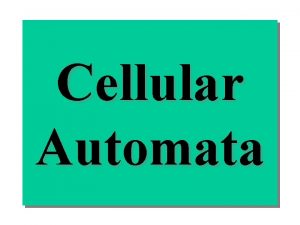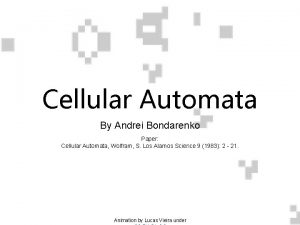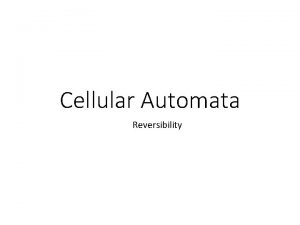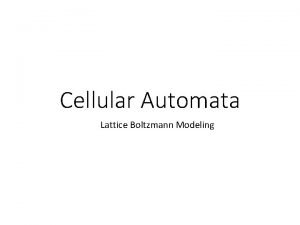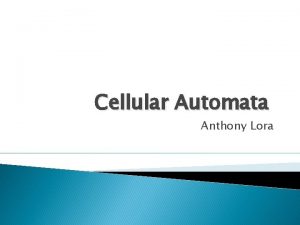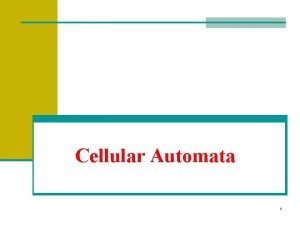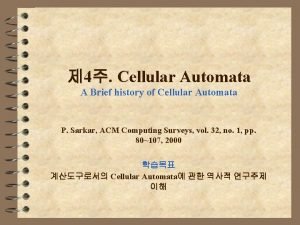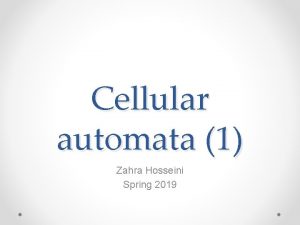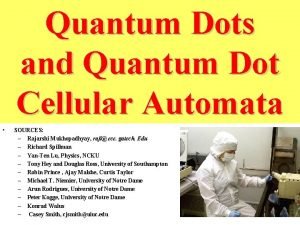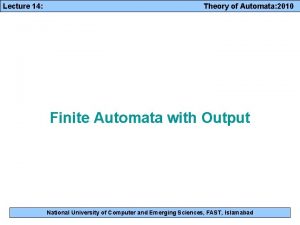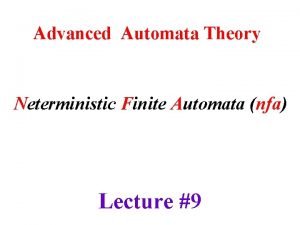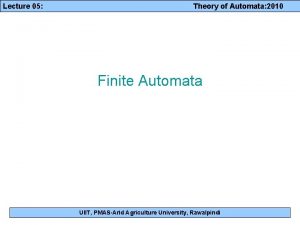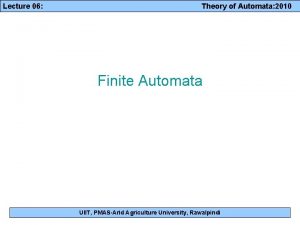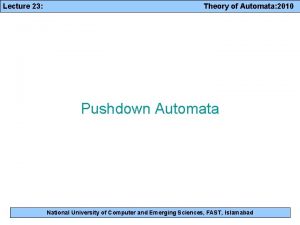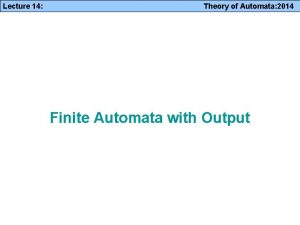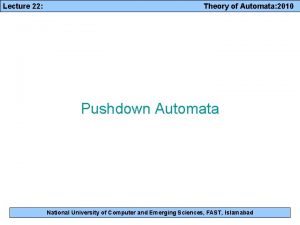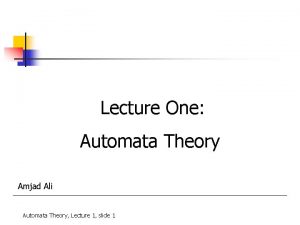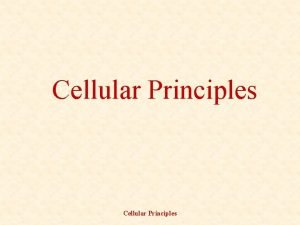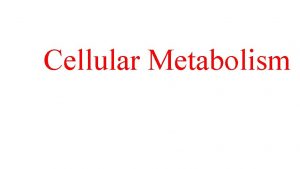Cellular Automata Universalities Sources Material in this lecture


























- Slides: 26

Cellular Automata Universalities

Sources • Material in this lecture comes from, “Handbook of Natural Computing, ” Editors Grzegorz Rosenberg, Thomas Back and Joost N. Kok, Springer 2014.

The μ-recursive functions (or partial μ-recursive functions) are partial functions that take finite tuples of natural numbers and return a single natural number. They are the smallest class of partial functions that • includes basic functions and • is closed under composition, primitive recursion, and the μ operator Basic functions Combining functions

Basic functions: 1. Constant function: 2. Successor function: 3. Projection function: .

Combining functions: 1. Composition operator: Given 2. Primitive recursion operator: Given 3. Minimization operator: Given

Intuitively, minimization seeks—beginning the search from 0 and proceeding upwards—the smallest argument that causes the function to return zero; if there is no such argument, the search never terminates. Strong equality: holds if and only if for any choice of arguments either both functions are defined and their values are equal or both functions are undefined.

Normal form theorem (Kleene): For each k: • there exist recursive functions U(y) and T(y, e, x 1, …, xk) such that • for all recursive functions f(x 1, …, xk), • there exists a corresponding Godel number e such that f(x 1, …, xk) is strongly equivalent to U(μ(T)(e, x 1, …, xk) Alternative formulation: The Godel numbers enumerate recursive functions: f=ϕ_e The input x 1, …, xk can be represented by a natural number, say n. There exists a recursive “bracket” function and a Godel number u such that ϕ_e(n) ≈ ϕ_u(<e, n>) U = ϕ_u represents a universal function

Church-Turing thesis A function is recursive iff it is Turing computable iff it is λ-computable What is the computational power of a machine? Can it compute every computable function? Turing Machine: 1 FSM behaving sequentially Cellular Automaton: infinite regular grid of copies of a FSM interacting synchronously, uniformly, locally 1. Does there exist a Turing universal CA? 2. Does there exist an intrinsical universal CA (that can simulate the behavior of any other CA on any type of configuration)?




Fig 7 Input to output transmission if inputs are separated by Δ_safety; it takes Δ_traversal Fig 8 Output to input blocking

(Uses Fig 7) (Use Fig 8)


Planar acyclic circuits consisting of fan-outs, OR, XOR gates Can compute any Boolean function Represent a FSM: State x Input State x Output (state is looped back; needs synchronization) Simulate a TM: 1. Replace each cell on the tape by a FSM describing the TM’s functionality Infinite configuration (need to additional CA states in order to remember how much tape is has been used; leads to finite configurations) 2. Implement a Minsky machine (= FSM + ctr 1 + ctr 2, can increment/decrement ctri as long as ctri remains >=0, can test ctri=0 and test ctri>0) Has been shown to be Turing universal

In order to construct size efficient universal Turing machines one can use tag systems (Post):

Game-of-Life is (happens to be after analysis) Turing universal:


If NE or SE is not present, then the other glider continues without disturbance



S N N S




Next time: reversible CAs (chapter 7) • • Read up to and including section 4. 1 Don’t bother about 4. 2 and 4. 3 Section 4. 4. 1 is interesting Glance over the rest Questions: • What is reversible computing? ? • Can one do as much with reversible computation as with general computation? ? • Why is reversible computation of interest? ? • Are there any drawbacks to reversible computing? ?
 Cellular automata matlab
Cellular automata matlab Print and web sources
Print and web sources Water resources
Water resources 01:640:244 lecture notes - lecture 15: plat, idah, farad
01:640:244 lecture notes - lecture 15: plat, idah, farad Cellular material
Cellular material Material culture and nonmaterial culture
Material culture and nonmaterial culture The knowledge language values customs and material objects
The knowledge language values customs and material objects Gd&t symbols
Gd&t symbols Example of material culture
Example of material culture Time variance
Time variance Classify the materials as useful or harmful
Classify the materials as useful or harmful Automata tűzoltó készülék
Automata tűzoltó készülék Finite automata
Finite automata Notasi ekspresi regular
Notasi ekspresi regular Central concepts of automata theory
Central concepts of automata theory Non deterministic turing machine
Non deterministic turing machine Ltl to buchi automata
Ltl to buchi automata Reduksi fsa
Reduksi fsa Power of linear bounded automata
Power of linear bounded automata Transition diagram for relational operators
Transition diagram for relational operators Automata theory
Automata theory Pushdown automata
Pushdown automata Cyk algorithm
Cyk algorithm Automata
Automata Automata-based programming
Automata-based programming Pda
Pda Diagram fsa
Diagram fsa
